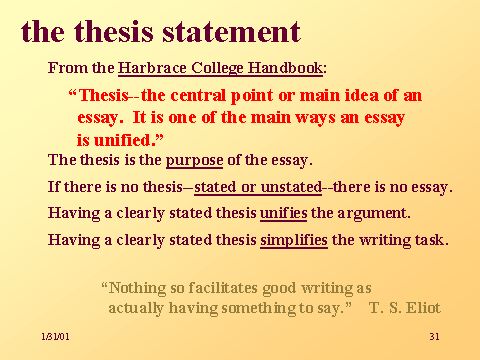The purpose of a research paper is crucial when preparing a thesis statement. Without a clear sense of purpose, no one will read the paper. It should focus on the findings of the study or research, and offer a key argument that stresses the importance of the problem. This statement will serve as the foundation of the entire paper. It should be simple to understand, and should include the purpose of the study.
Creating a strong thesis statement
Thesis statements are a vital part of academic writing, and they are often the foundation of a research paper. This article will give you an overview of the role thesis statements play in a research paper and how to create a strong statement for a research paper. Then, you can use that statement as a guide for your research paper. Let’s take a look at some examples of thesis statements.
A thesis statement should be an argument or claim. It should also be specific enough to cover the scope of the paper. For example, if you’re writing about preventing youth gang activities, a thesis statement that states that schools should offer prevention programs is the most effective way to accomplish this. This is also a key point to remember when creating a thesis statement. Make sure that it covers the scope of the essay.
A thesis statement can be as simple as a “world hunger causes poverty.” You can start by stating that you believe that consanguineal marriages undermine the structure of the nuclear family, or as controversial as the ban on soda machines in schools. While there are many examples of strong thesis statements, they all share one thing: they take a stand on the subject and make a strong argument.
Checking if someone could argue with your thesis statement
When writing a research paper, you should consider whether a particular claim you make in your thesis statement is valid. Depending on the subject of your paper, you might have an argument that is more appropriate for a religious or Christian ministry class than a sociology class. Think about how your argument could be weaker for non-believers and make changes as necessary.
The thesis statement is the core of your research paper. It is an answer to a question. You might want to write about how America’s National Parks are managed, and how the balance between protecting wilderness areas and allowing people to visit them is maintained. Alternatively, your thesis statement may be about why the current regulations in place limit the freedoms of students. Your thesis statement should be clear and well-supported by factual and logical evidence.
To be clear about the importance of your thesis statement, you can start with its significance. Strong thesis statements grab the reader’s attention, and they remain in their minds long after the reading is done. In other words, a good thesis statement should be able to convince the audience that you have a valid point and they should not argue against it. Then, you can expand the funding for alternative energy sources and prepare for the end of oil.
Writing a conclusion in a research paper
The purpose of writing a conclusion in a research paper is to summarize the main points of your paper. The conclusion should emphasize your research’s solution, contribution to society, or gap in knowledge. Throughout the paper, you should show your reader how your findings challenge or confirm an existing theory. You can also use new words and terminology to explain the problem or solution in a fresh light. In the end, the conclusion should leave your reader with a sense of satisfaction and confidence.
A conclusion is also a good place to introduce any extra facts or data. The purpose of a conclusion is to provide a sense of closure. It should show that you have made your point and that you have provided enough detail to convince your reader to believe your findings. The conclusion should also spark curiosity and a desire to learn more about the topic. While the introduction and body sections are crucial parts of the research paper, the conclusion is the last section.
A conclusion should contain no more than five or seven percent of the overall paper’s word count. The length of the conclusion depends on the type of paper you’ve written. Empirical studies, for example, usually have a short conclusion, which summarizes their findings and recommendations. If your paper is an analytical research, however, the conclusion should begin with the research questions and end with a strong answer to them.

